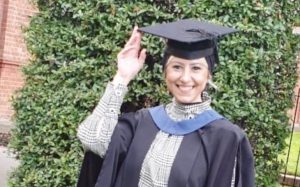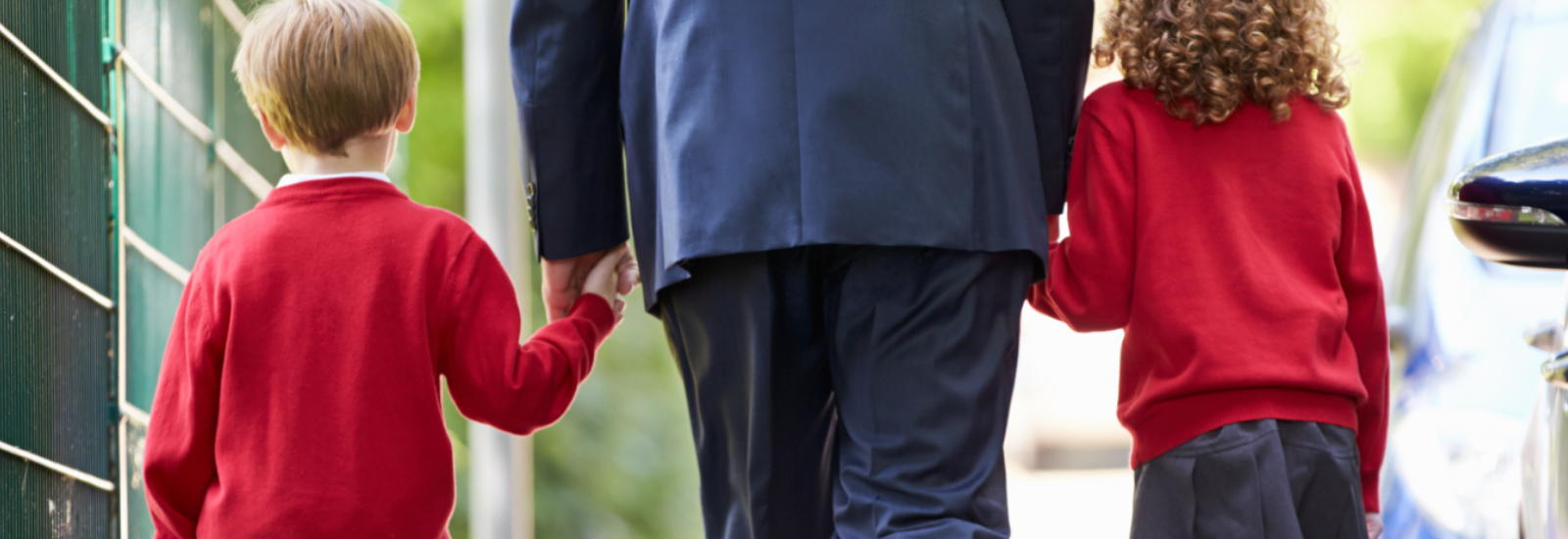CONNECTED talks to Sherine Ahmed – a primary school teacher – about the highs and lows of teaching during a global pandemic, and how proud she is to be part of the team of key workers keeping children educated.
Sherine relocated from Liverpool to Reading to study the Primary School Direct Salaried route into teaching at the University, because of its strong established partnership with many local schools – something she couldn’t find at other universities.
 She said of her time at Reading: “It really changed my life and I can honestly say I don’t regret the move. I was supported by my tutors who made every student feel unique and special; they were always happy to listen and provide advice if needed. The resources and learning hub at Reading were also invaluable.
She said of her time at Reading: “It really changed my life and I can honestly say I don’t regret the move. I was supported by my tutors who made every student feel unique and special; they were always happy to listen and provide advice if needed. The resources and learning hub at Reading were also invaluable.
“On graduating from Reading, I was offered a Newly Qualified Teacher [NQT] job as a Year 1 Teacher at Southcote Primary School. After completing my NQT year, I was then promoted to science lead which was my dream job.
“I always wanted to teach and I find working with children so rewarding. It’s down to this phenomenal programme at Reading – which was individually tailored to meet my needs – that I’ve been able to achieve my career goals.”
However, what Sherine could not have foreseen was that shortly after starting as science lead, the COVID-19 pandemic would sweep the world. Sherine talks to CONNECTED about her experience of being a teacher during the pandemic; the impact of lockdowns on primary school children; and what the return to physical teaching has been like.
Supporting children
During the first national lockdown in 2020, Sherine was teaching key worker and vulnerable children as well supporting children based at home.
She said: “I was working on a rota basis with two weeks in school and then two weeks at home. During my two weeks at home, I would ring all 30 students in my class to support them both emotionally and academically.
“I did not teach children virtually, but I planned and created learning packs which I uploaded onto the school website, and did door-step drop-offs with reading books. I made it clear to parents that my email was always open for anyone that needed support.
“Once the government announced the return of Year 1 children to schools in June 2020, I returned to full-time in-person teaching, as well as planning lessons and supporting those still at home.”
But when the UK entered its third national lockdown in 2021, the school closures once again disrupted the lives of school staff, children and their parents. Sherine said:
“Since January, I’ve been teaching five year olds virtually which is as hard as it sounds.
“To make it manageable, I have grouped the children into groups of three, which means I now teach the same lesson five times a day – this includes one face-to-face session in school for key worker and vulnerable children, and four times at home virtually.”
Returning to the classroom
As pupils return to the classroom this week, Sherine explains the challenges the school and its staff had to tackle before welcoming them back. She said:
“We established our COVID-safe protocols before pupils returned in September 2020 and these protocols remain in place now.
“We rearranged the classrooms to ensure social distancing – children were allocated seats, and we implemented staggered lunchtimes, drop-off and pick-up times. We are bubbled into our year groups of 90 people as well as staff room bubbles, and the school has provided Personal Protective Equipment and more cleaning resources where needed.”
The main difference between the return to school in September 2020 and the return this month is that staff are now being regularly tested for COVID-19.
Sherine said: “All staff, regardless of their job role in the school, are now being given lateral flow tests to test themselves at home twice a week. Some families will also be offered the test as well, according to certain criteria.
“I feel perfectly safe at school and I am happy with the safety precautions that have been put in place. I am so pleased to be back to full-time face-to-face teaching; I don’t believe that virtual teaching for primary school children can be as effective, or have as positive an impact on their learning.
“Our first week back has been spent focused on wellbeing, mental health and PSHE [Personal, Social, Health and Economic education] in order to ease the children back into the school routine. We are then planning to spend the remaining time before Easter focusing on catch-up interventions and addressing gaps in learning with 1:1 sessions.”
We’re all in this together
Sherine is proud to be part of the national effort in keeping children educated throughout the pandemic. She said:
“It makes me happy knowing that I am helping others during these difficult times. I feel responsible for ensuring that every child from my class is OK; the feeling that ‘we’re all in this together’ is a genuine daily feeling, not just a feel-good quote.
“My work also helps me on a personal level by keeping me busy during the lockdowns. My husband is an NHS doctor, so he spent more than three months living away from me and our daughter in 2020, to try and protect us from the virus. My work and dedication to the children in my class helped to get me through this separation.”
Sherine concludes by sharing some positive words as we start to exit the UK’s third national lockdown: “I hope that everyone was able to find some benefit in these tough times. I believe there was a positive side to the lockdown’s impact on children – as many got to spend quality time with their families – I believe this has helped children’s personal, social and emotional development as well as their gross motor skills, and I hope that families were able to cherish this time spent together.
“Nevertheless, I’m thrilled that schools have now reopened safely to enable face-to-face teaching to recommence.”
Discover more about the inspirational roles our alumni have played during the pandemic through our online Alumni Lecture Series: ‘COVID – Stories from the Frontline’.





